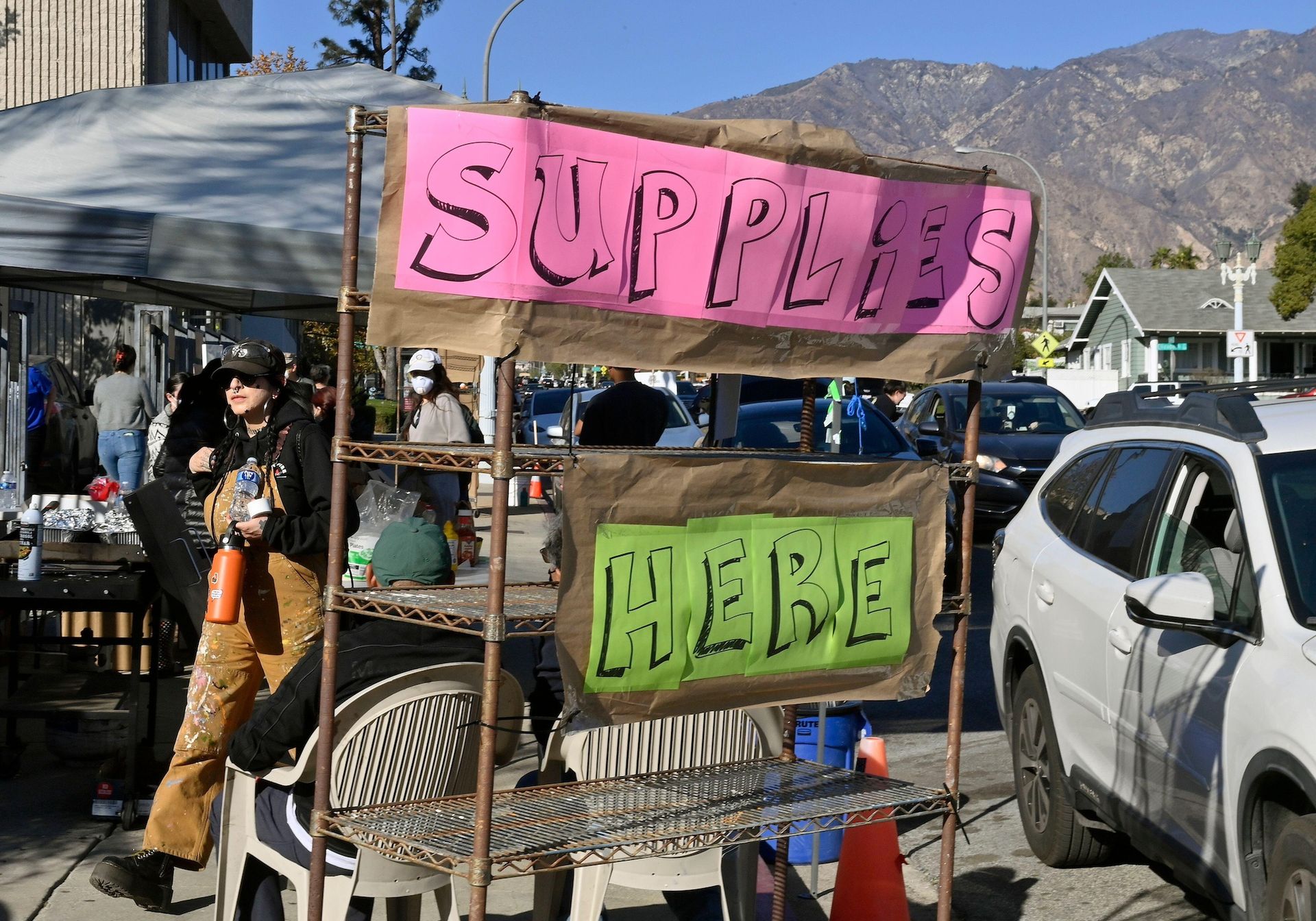For many of us in Los Angeles, we have just had the worst week of sleep in our entire lives. Since 7 January, when multiple wildfires burnt entire neighbourhoods to the ground, every night the fear of further catastrophe has followed us to bed. Fueled by drought conditions and municipal negligence, the fires are still going; they rage in the mountains above the city right now, spreading according to the whims and hurricane-force of the fabled Santa Ana winds.
Certain events in this life strike the earth like a meteor, effectively bringing an end to the world as we know it. The fires that came over the mountains and breached the city limits were exactly that level of cataclysmic; they brought the threat of climate change out of the distant future and set it before us, transforming the hypothetical into a clear and present danger. Those of us who hadn’t grasped the urgency of the situation had our minds changed overnight. On 7 January, with every successive evacuation order in increasingly improbable areas—Santa Monica, West Hollywood—the distance between imminent disaster and ourselves grew smaller by the hour.
On the longest night in recent memory, the Los Angeles art world suddenly felt like a very small, intimate place in a steady exchange of messages: Are you safe? Are you okay? I heard the Reel Inn burned down. Ultimately it came to I’m so sorry for your loss, as news of artists losing their homes and studios trickled in.
In the polluted orange of the sun’s morning light on 8 January, my house was fine. Far from the fires, the building stood beneath a patina of black soot, and delicate flakes of ash snowed down from the sky. But on opposite ends of the city, the fires had taken homes and livelihoods from every type of person, indiscriminate of privilege, politics, race or class. On the affluent coast, the Palisades fire obliterated the Pacific Palisades and stretches of Malibu, headlined in the news by the loss of celebrity homes. And on the east side, the Eaton fire subsumed the predominantly working-class, historically Black area of Altadena, wiping countless generational properties as well as artists’ homes and studios off the map.
The morning after she evacuated, Hayv Kahraman returned to Altadena to find her home a smouldering pile of rubble. Over email, she tells me it triggered her memories of war: “Driving into the plume took me back to my childhood in the 1990s in Iraq; the desperation in people’s eyes and utter destruction of buildings.”
The news offers its own points of reference for understanding the scale of Los Angeles’s loss. As of this writing the death toll stands at 24, the total area of burnt land is about two-and-a-half times the size of Manhattan and early estimates of the damage are between $135bn and $150bn. There are no metrics, however, for the scale of collective grief. The emotional fallout is still unfolding in unexpected ways.
“A house contains a family’s collected trauma,” a fellow art writer told me, adding: “Most aren’t emotionally regulated well enough to hold each other through the healing.” After losing his childhood home, her partner was suddenly faced with long-neglected wounds the fire had forced into the light; they simply no longer had a place to hide.

Supplies and aid are offered for those affected by the wildfires in Los Angeles at the Clay House, a ceramics studio in Pasadena Photo by Jim Ruymen/UPI Credit: UPI / Alamy Stock Photo
Revelations continued at the city and state levels, where the fire exposed a litany of other ugly truths: that we have done little in terms of meaningfully curbing climate change; that we exploit the incarcerated to fight our fires; and that this event was so foreseeable that insurance companies had already left Los Angeles en masse. And yet our elected officials were woefully unprepared for the flames.
The end of the world as we know it opens new and infinite possibilities, and in the marked absence of leadership, the people have begun rebuilding themselves. The Los Angeles art world is looking inward and identifying one another as a community. In an outpouring of mutual aid, artists are collecting supplies and starting GoFundMe campaigns for one another, and others have launched Art World Fire Relief LA in order to allocate resources.
That renewed solidarity is the best takeaway from all of this, particularly the way it recontextualises our proximity to disaster. Contrary to Angelenos’ reputed indifference, the disaster that strikes our neighbour’s house strikes all of ours; we are no longer waiting for it to come to our door.










